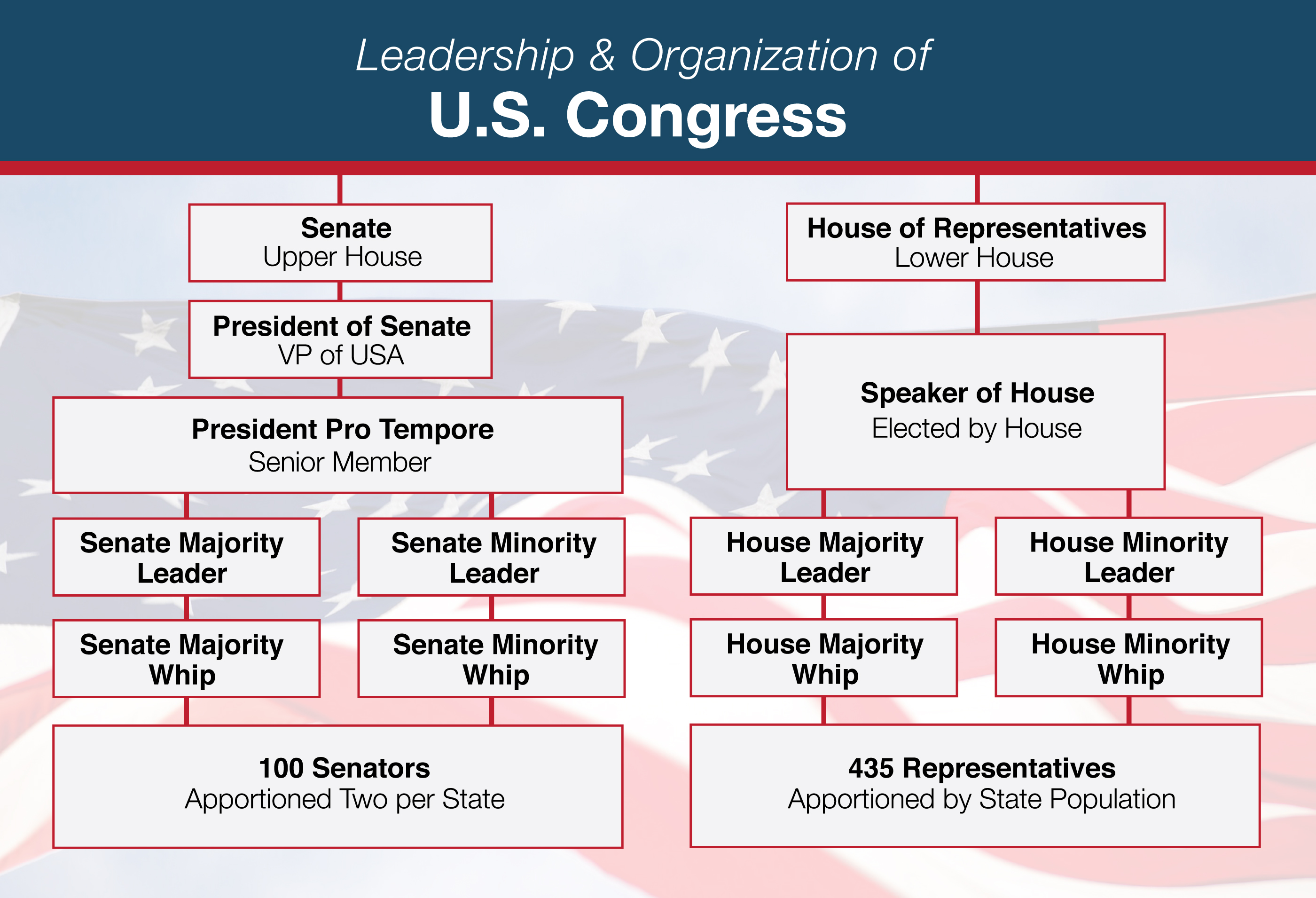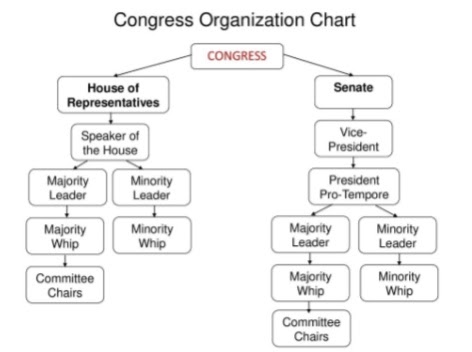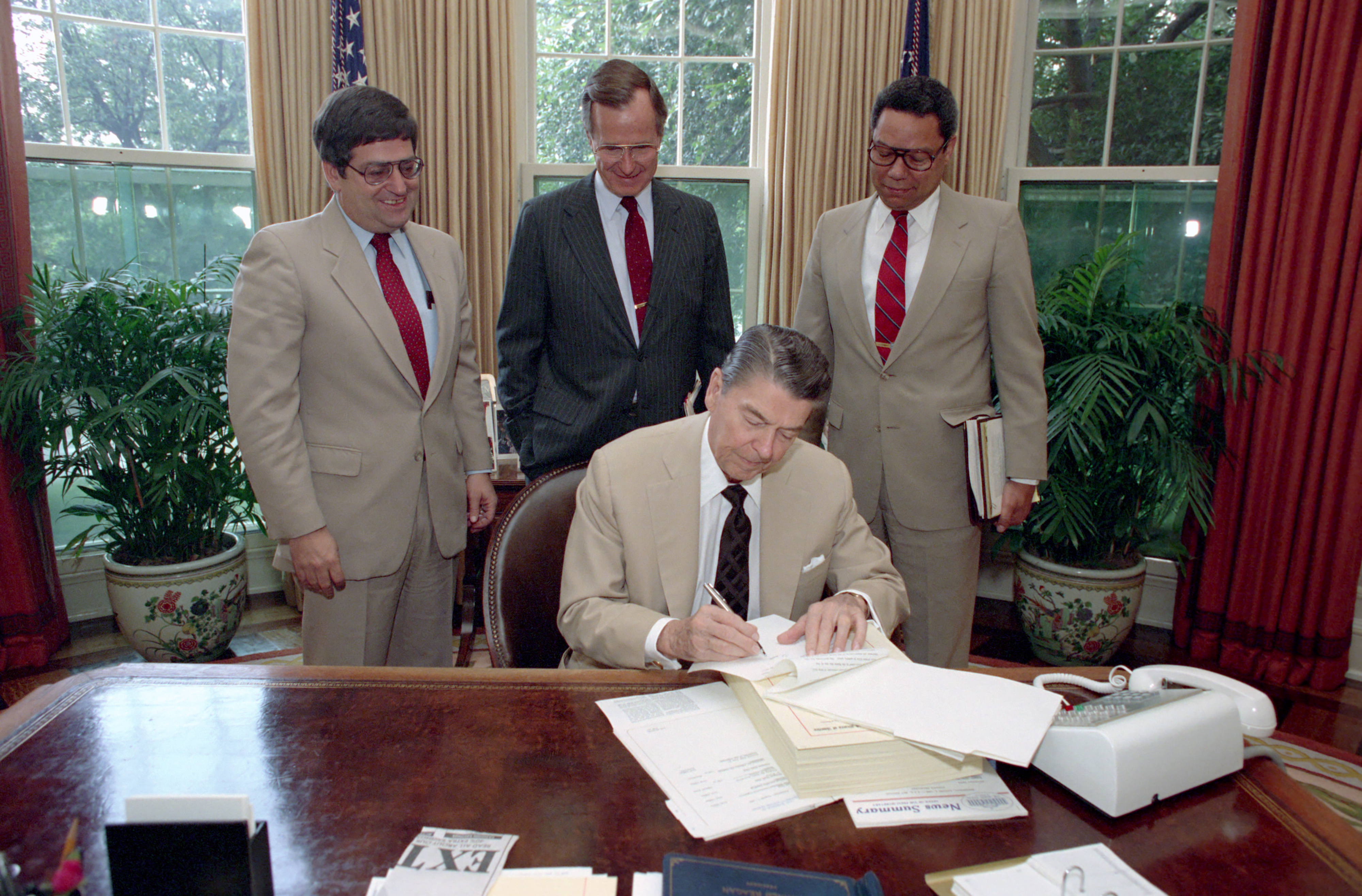2.2 Structures, Powers, and Functions of Congress
9 min read•june 18, 2024
Jed Quiaoit
S
Samantha Howey
AP US Government 👩🏾⚖️
240 resourcesSee Units
Balancing the Policy-Making Process
The different structures, powers, and functions of the Senate and the House of Representatives were deliberately created to play a role in the policy-making process and to provide checks and balances on each other's power. 🪑
The Senate, with its smaller membership and equal representation of states, was intended to represent the interests of the states as a whole, and to act as a check on the power of the more populist House of Representatives.
The House of Representatives, on the other hand, was designed to be more responsive to the changing needs and opinions of the population, with its larger membership and representation based on population. The House's shorter terms of office and its requirement for members to face re-election every two years make its members more attuned to the public's changing needs and priorities, and more likely to take bold action in response to them.
The different structures, powers, and functions of the two chambers also affect the policy-making process in other ways. For example, the Senate's unique role in confirming presidential appointments, ratifying treaties, and trying impeachment cases, gives it an important role in shaping policy through these processes. The House's role in originating revenue-raising legislation, as well as its power to impeach federal officials, provides it with important leverage over the policy-making process.
Powers
Delegated powers require both houses of Congress to work with each other. These powers are the powers to: 🔨
- enforce taxes
- borrow money
- regulate commerce
- raise an army
- create and make rules for federal courts
- establish naturalization laws
- establish post offices
- provide a militia
- make laws necessary and proper to carry out these powers
Congress also has the power of the purse which gives the Congress to influence the president or bureaucracy by withholding or putting conditions on funding. The power of the purse can be used to promote specific programs or lessen the power of an agency and the power of the purse has been used by Congress to limit executive power.
Powers Unique to One Chamber
The House of Representatives can only initiate tax laws and spending bills. Thus, the House Ways and Means Committee oversees taxing and spending legislation. The Senate can only amend revenue bills. 👆
Some of the Senate’s unique powers include confirming president nominations to federal courts or ambassadorships to foreign countries, confirming members of the president’s cabinet, and ratifying treaties signed by the president.
Congressional actions do have restrictions meaning that Congress can’t pass bills of attainder or ex post facto laws, levy export taxes, or grant titles of nobility.
Committees and Constitutional Responsibilities
Committees play an important role in the policy-making process in both the House of Representatives and the Senate, as they allow for in-depth consideration of bills, conduct hearings to gather information, and facilitate debate and discussion among members. However, the different constitutional responsibilities of the two chambers affect the ways in which committees contribute to the policy-making process. 🐟
In the House of Representatives, committees are often the first step in the legislative process, as they are responsible for reviewing and refining legislation before it reaches the full chamber. House committees also play a role in determining the priorities of the chamber, as they are responsible for deciding which bills to consider and in what order.
In the Senate, committees also play an important role in the policy-making process, but their responsibilities are shaped by the different constitutional responsibilities of the Senate. For example, the Senate's role in confirming presidential appointments, ratifying treaties, and trying impeachment cases gives its committees a unique role in shaping policy through these processes. Senate committees are also more likely to take a longer-term view of policy issues and to focus on building consensus, due to the longer terms of office of its members and the requirement for a supermajority vote to end a filibuster.
Congressional Oversight and Transparency
Congress performs oversight through committees and subcommittees to review the work of executive agencies which provides a check on the executive branch. Congress investigates corruption and waste and also calls on experts and citizens to testify at hearings to discuss the government’s problems and provide solutions. All of the committee chairs have the power to legally compel witnesses to appear and testify.
Committee hearings and floor debate help to increase the public’s knowledge of the government and societal issues. Floor debates can garner national attention because of issues like gun control, tax cuts, Social Security reform, healthcare reform, and sending armed troops abroad.
Legislative Process
The legislative process is slow by design which prevents Congress from acting hastily. The framers intended that this would allow for compromises to be met, but in reality final versions of bills are vastly different from the initial versions. 🐌
Bills can be written by members of Congress and their staff or the executive branch and are introduced by a member of Congress. They can also be suggested and written by interest groups and their attorneys.
It doesn’t matter who authors a bill, but only a member of Congress can introduce it and the member who introduces the bill becomes its sponsor.
The legislative process allows for both the House and Senate to work with each other and the bills must be in exactly the same form when they pass both houses. The debating and voting processes in both Chambers differ because of the size of their memberships.
Structure
Rules in the House of Representatives
Since the House of Representatives has 435 members the process of debating bills is limited. The Senate only has 100 members, so there are relatively few rules governing it.
The House Rules Committee is responsible for determining how long a bill will be debated and, whether to allow open or closed rules for amending bills. An open rule allows amendments to be added to bills, but closed rules prevent amendments from being added to bills.
The House Rules Committee has been considered one of the most powerful committees in the house because it controls crucial aspects of the legislative process. The Rules Committee can kill a bill by delaying a vote, allow it to be easier for opponents to add poison-pill amendments, or bring the bill up for an immediate floor vote.
Time allotted for debating the bill in question is split equally between its proponents and opponents. The committee cannot itself pass legislation but may debate and propose amendments. ⏰

Source: North Georgia
Important Roles in the House
The Speaker of the House is the constitutionally mandated presiding officer of the House of Representatives. The Speaker is chosen in the caucus of the majority party and is empowered to:
- recognize members to speak on the floor
- rule whether a motion is germane
- assign bills to committee
- appoint House members to select and joint committees
- appoint the majority members of the Rules Committee.
Here are some more key figures:
- House Majority Leader: has control of the dominant party in the lower house
- is responsible for enactment of their party's programs
- House Majority Whip: a party leader in the lower house
- exerts pressure on party members to vote with the party
- responsible for getting their party's program enacted into law
- The House Minority Leader: leader of the minority party in the lower house
- responsible for informing party members and organizing resistance to programs submitted by the majority
Important Roles in the Senate
- President of the Senate: Vice President of the US
- constitutional duty is to oversee the processes of the Senate
- can only vote if there is a tie
- President Pro Tempore: most senior member of the majority party and has been appointed to fill in for the Vice President as presiding officer
- typically a ceremonial role
- junior members of the majority party are rotated and appointed as presiding officer to give them parliamentary procedure practice
- Senate Majority Leader: role of leadership in the upper house
- responsible for passage of the majority party's programs
- informs and pressures party members to vote for programs
- determine the order in which bills are to be debated
- assign members to committees.
- Senate Majority Whip: assistant majority leader of the upper house
- assists the floor leader
- communicates party positions
- rallies the party members for crucial votes
- orchestrates party support for important legislation
- Senate Minority Leader: leader of the minority party in the upper house
- responsible for resisting programs submitted by the majority party
- Senate Minority Whip: assistant minority party leader in the upper house
- reminds members about party positions
- informs them when important bills are scheduled for a vote
- orchestrates party opposition to majority bills
- Committee Chairperson: committee heads
- decides which bills to discuss and may kill a bill
- selected by the Majority Leaders in both houses

Rules in the Senate
A debate in the Senate does not have a time limit, so senators can debate for as long as they want.
A filibuster is a tactic used to delay a vote on a bill and tie up the work of the Senate, because a senator makes a speech that continues for hours on the Senate floor. The only way to end a filibuster is to vote for a cloture. A cloture requires votes from 60 members to end the filibuster. 🐷
- Earmarks are provisions within legislation that appropriate money to a specific project in appropriations and authorization bills.
- Logrolling is when two legislators agree to trade votes for each other’s benefit.
- Pork barrel legislation is the use of federal funding to finance localized projects, typically bringing money into a representative’s district in order to please constituents and boost the representative’s chances of winning reelection.
After debates, the bills usually pass in the House and Senate in different forms, so both versions are sent to a conference committee. The conference committee came from the committees in the house and Senate that wrote the bill.
Functions
Most of the legislative business in Congress is done in committees. The majority party in power holds all the committee chairs and majority of seats on the committees allowing the party in power to control all the business of the committees.
Committees
Most of the legislative work is done in committees, and most proposed bills die in committee.
The Standing Committee is a legislative panel with full legislative functions and oversight responsibilities. The members become experts in their respective topic and examples of committees include the Appropriations Committee (sets specific expenditure for the federal government) and the Armed Services Committee (oversees military and defense).
A subcommittee is formed to investigate specific topics within a standing committee. Examples include the Livestock, Dairy, and Poultry (sub committee of agriculture) and the Health Care Subcommittee (sub committee of finance committee).
Select Committees are temporary committees with limited purposes in areas like investigation.
A Joint Committee involves members of both the House and Senate, and they have jurisdiction over matters of joint interest. An example of a joint committee is the Joint Committee on the Library, but most joint committees are permanent (as with the Library Committee) but temporary joint committees have been created to address specific issues (such as the Joint Committee on the Conduct of the War during the American Civil War).
The conference committee tries to negotiate a compromise bill that is acceptable to both the House and Senate. When a compromise version of the bill has been written, the bill goes to both houses for a vote, and if passed in both houses, it goes to the White House for the president to sign it.
The President's Desk
When the president gets a bill, he must decide whether to sign or veto legislation within ten days (excluding Sundays) while Congress is in session. There are three things the president can do. If the president signs the bill, it becomes law. He can also veto the bill. The final option is that the president can 'sit' on the bill and take no action. After ten days (excluding Sundays), the bill becomes law without the president's signature. 🧍

If a president takes no action and sits on the bill and Congress adjourned before the ten-day period ended, the bill becomes pocket vetoed. When a bill is pocket vetoed it must go through the entire legislative process again.
When the president vetoes a bill, Congress has two options: either make the suggested changes to the bill or try to override the veto by a two-thirds vote. If the bill receives a two-thirds vote in both houses, it becomes law without the president’s signature or if the house the bill originated in does nothing, the bill is dead. 💀
🎥 Watch: AP GOPO - Congress' Two Chambers
Browse Study Guides By Unit
🏛Unit 1 – Foundations of American Democracy
⚖️Unit 2 – Branches of Government
✊🏽Unit 3 – Civil Liberties & Civil Rights
🐘Unit 4 – American Political Ideologies & Beliefs
🗳Unit 5 – Political Participation
🤔Exam Skills

Fiveable
Resources
© 2025 Fiveable Inc. All rights reserved.